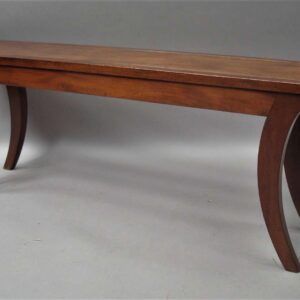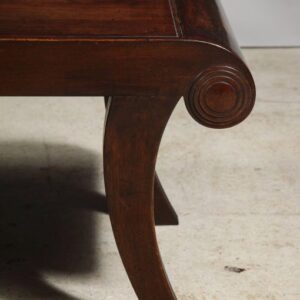My wife wants me to make a bench in the Regency style, something along the lines of the photos below. How does one make to scroll feature on the ends of the bench? I have not examined an actual bench like this, nor seen any articles in magazines or books on how to do this. Veneer? Choices of grain direction? Carved from solid glue-up? Any glue lines showing? Any guidance would be much appreciated. THANKS
Discussion Forum
Get It All!
UNLIMITED Membership is like taking a master class in woodworking for less than $10 a month.
Start Your Free TrialDiscussion Forum
Digital Plans Library
Member exclusive! – Plans for everyone – from beginners to experts – right at your fingertips.
Highlights
-
Shape Your Skills
when you sign up for our emails
This site is protected by reCAPTCHA and the Google Privacy Policy and Terms of Service apply. -
 Shop Talk Live Podcast
Shop Talk Live Podcast -
 Our favorite articles and videos
Our favorite articles and videos -
E-Learning Courses from Fine Woodworking
-
-
 Fine Woodworking New England Event
Fine Woodworking New England Event














Replies
This reproduction of a scroll is made of concentric circles and could be easily made on a lathe using a faceplate and glued to the piece of furniture, a spiral scroll would require carving.
Charles Shackleton has written several FWW articles either about or including carved details on furniture. Probably the most applicable one is from issue 173-Nov/Dec 2004, see the attached photo from that article. Another good one by him includes carving a scroll and is in issue 197-Mar/April 2008. Hope these help.
What gulfstar sasaidbut an original scroll would have been carved.
Thanks. I did not express my problem properly. My referral to "scroll" was really the cylindrical rolled ends of the bench, rather than the appliqué type carvings. How is the cylinder attached to the bench top plank with the smooth, spiral-like transition? Can the grain be oriented longitudinally or must it be transversely to the top plank?
The Charles Shackleton end table noted above used laminations added to each end of the top, matching the grain direction of the top boards. It would be best if the laminations were from each end of the top glue-up for best color and grain match. Visualize an over-length top with the ends just folded under.
This forum post is now archived. Commenting has been disabled